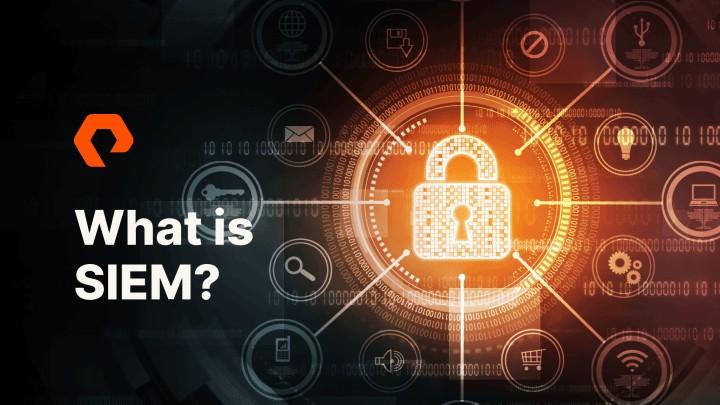How a Modern SIEM Works — Inside the Engine

Introduction
It’s easy to describe what a Security Information and Event Management (SIEM) platform does: collect logs, detect threats, and generate alerts. But the real value of SIEM comes from understanding how it operates under the hood. Modern SIEM platforms go far beyond simple log aggregation—they transform raw events into enriched intelligence, correlate activity across diverse systems, and empower security teams to investigate and respond quickly.
In this post, we’ll break down each stage of the SIEM solutions workflow, showing how data moves from collection to detection, investigation, compliance, and response. Along the way, we’ll highlight why each step matters and how it adds value to cybersecurity operations.
1. Data Ingestion & Collection
The SIEM journey begins with data ingestion.
- Logs, events, and telemetry are collected from a wide range of sources—firewalls, switches, servers, endpoints, identity systems, cloud platforms, and SaaS apps.
- SIEMs support multiple collection methods such as Syslog, APIs, and lightweight agents.
- Coverage includes environments like AWS, Azure, Google Cloud, Microsoft 365, and Salesforce.
Broad source coverage is critical; blind spots in data collection leave gaps attackers can exploit.
2. Parsing, Indexing & Normalization
Raw logs come in dozens of different formats. To make sense of them:
- SIEMs parse incoming data in real time, extracting key fields and metadata.
- The data is normalized into a common schema, allowing events from different systems to be compared and correlated.
- Efficient indexing ensures queries and searches are fast, even over terabytes of log data.
This step lays the foundation for meaningful detection and rapid investigation.
3. Enrichment & Contextualization
Data on its own isn’t enough. SIEMs enrich events with context to turn raw signals into intelligence. For example:
- Linking IP addresses to geolocation.
- Adding user identity and device details.
- Overlaying threat intelligence scores.
- Comparing current activity to historical behavior.
With this added context, analysts can distinguish between harmless anomalies and true indicators of compromise.
4. Threat Detection & Correlation
Detection is at the heart of SIEM. Modern platforms use several methods:
- Rule-based correlation: Linking related events across sources—for example, a failed login followed by unusual file access.
- Anomaly detection: Spotting deviations from normal baselines, such as spikes in outbound traffic.
- Behavioral analytics: Monitoring user and entity behavior to identify suspicious activity.
The SIEM then scores risks, prioritizes alerts, and surfaces the most urgent threats, reducing noise for analysts.
5. Alerting & Notification
When detection logic is triggered, the SIEM generates alerts. Strong SIEM solutions ensure these alerts are actionable:
- Alerts appear in dashboards, are sent via email, or flow into ticketing systems.
- Integration with Security Orchestration, Automation, and Response (SOAR) platforms enables automated workflows.
- Duplicate alerts are suppressed and related events aggregated, preventing alert fatigue.
6. Investigation & Forensics
Once an alert is raised, analysts dive deeper. Modern SIEMs provide rich tools for investigation and forensics:
- Drill down into individual events and pivot between related logs.
- Explore timelines and event linkage graphs to trace attacker movements.
- Identify root causes, lateral movement, and data exfiltration attempts.
These capabilities allow security teams to go beyond detection and fully understand the scope of an attack.
7. Reporting & Compliance
For many organizations, compliance is as important as detection. SIEMs simplify reporting by:
- Offering pre-built dashboards and templates for frameworks like PCI DSS, HIPAA, SOX, and GDPR.
- Supporting long-term log retention for audit readiness.
- Allowing customizable reports tailored for executives, auditors, or technical staff.
This ensures that compliance isn’t a separate burden—it’s built into the security workflow.
8. Response Integration & Automation
While SIEM’s core focus is detection, modern platforms integrate tightly with response tools:
- Connections with EDR, SOAR, and firewalls enable containment actions.
- Automated responses can be triggered—such as disabling a compromised account, blocking an IP, or isolating a device.
- Detection flows directly into response, reducing the time from alert to action.
9. Scenario Walk-Through: Detecting a Compromised Account
To see this in action, consider a compromised account scenario:
- A user logs in at an unusual time from an unexpected location.
- The SIEM flags this login as anomalous, enriched with geo and identity data.
- Soon after, the same account attempts suspicious file access.
- The SIEM correlates the events into a single alert: possible account compromise.
- An analyst investigates, reviewing event chains and cross-source logs.
- Response is triggered: the account is disabled while forensic logging continues.
This shows how SIEM turns scattered signals into a clear, actionable incident.
10. Best Practices for Maximizing SIEM Value
To get the most from a SIEM services deployment:
- Start with critical sources (identity, endpoints, network) before expanding.
- Continuously tune detection rules and thresholds to reduce false positives.
- Regularly revisit correlation logic, enrichment feeds, and alert priorities.
- Train analysts to use investigation tools effectively.
- Keep parsers, connectors, and threat intelligence feeds up to date.
- Integrate SIEM with EDR, NDR, and SOAR for broader defense coverage.
- Monitor indexing performance and scale infrastructure to match data growth.
Conclusion
A modern SIEM does far more than log collection. It is a cyber defense engine, transforming raw data into enriched intelligence, detecting advanced threats, enabling forensic investigations, and integrating seamlessly into response workflows.
When properly deployed and tuned, SIEM becomes the nerve center of your security operations center (SOC)—helping teams see threats earlier, respond faster, and strengthen resilience against ever-evolving attacks.
- SIEM
- security_information_and_event_management
- log_collection
- threat_detection
- incident_response
- data_enrichment
- threat_correlation
- compliance_reporting
- security_automation
- SOAR_integration
- forensic_investigation
- cybersecurity_operations
- SOC
- compromised_account_detection
- cybersecurity_best_practices
- Art
- Causes
- Crafts
- Dance
- Drinks
- Film
- Fitness
- Food
- Jogos
- Gardening
- Health
- Início
- Literature
- Music
- Networking
- Outro
- Party
- Religion
- Shopping
- Sports
- Theater
- Wellness


